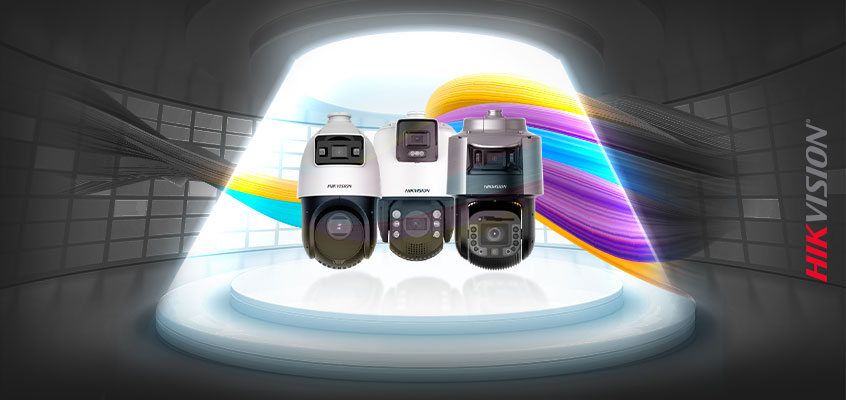TandemVu PTZ Cameras with ColorVu Technology Create an Amazing Combination of Features

Hikvision’s next generation technology is fully displayed through the TandemVu PTZ Cameras, which integrate a bullet camera and a PTZ camera in one unit. This allows wide angle views to remain clear even as pan, tilt, or zoom actions take place. TandemVu PTZ models features ColorVu technology which enables vivid, color images even in darkness. These models offer an amazing combination of features with two cameras working in tandem to consistently create clear imaging and full color 24/7.
Applications for TandemVu PTZ cameras with ColorVu technology can include:
- Schools
- Parking lots
- Healthcare campuses and hospitals
- Large properties
Specifically, healthcare campuses, hospitals, and other large facilities can greatly benefit from TandemVu PTZs with ColorVu. These cameras allow security professionals to zoom in on persons of interest while still maintaining general situational awareness. While traditional PTZs may lose the big picture, Hikvision’s TandemVu PTZ cameras can pan, tilt, and zoom with no loss of the big picture. This enables security staff to do more and see more, even with limited resources.
For example, if a suspect is captured on video with a certain color shirt or driving a certain color vehicle, ColorVu facilitates views with full color detail and render those details on the screen. This makes post-event investigation easier and more accurate when reporting it to the police. This is just one of many ways TandemVu PTZ cameras with ColorVu technology create a reliable toolkit for security professionals.
Hikvision offers a wide range of cameras with ColorVu technology. Check out this ColorVu + X video to learn more and reach out to your local representative for more information.
